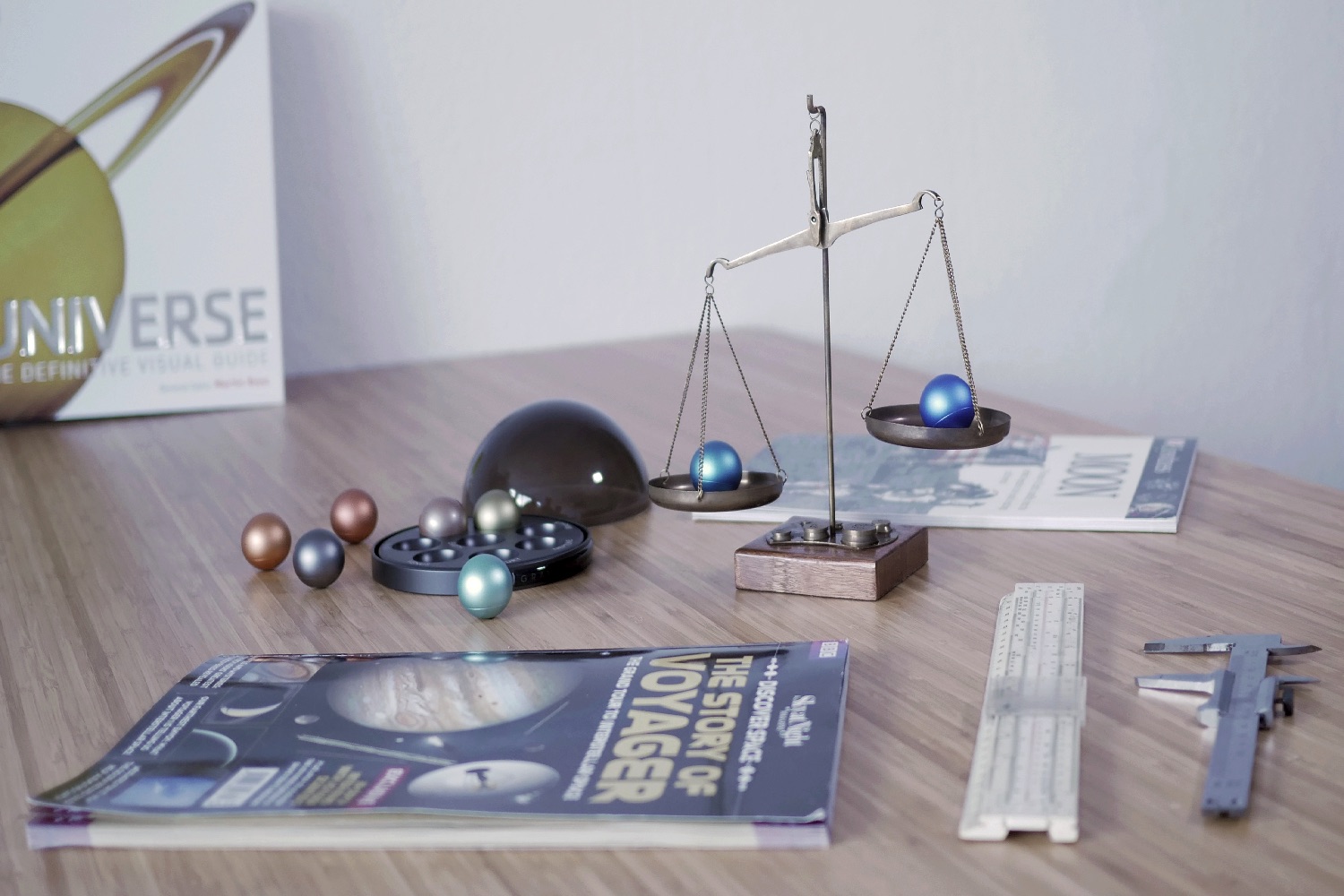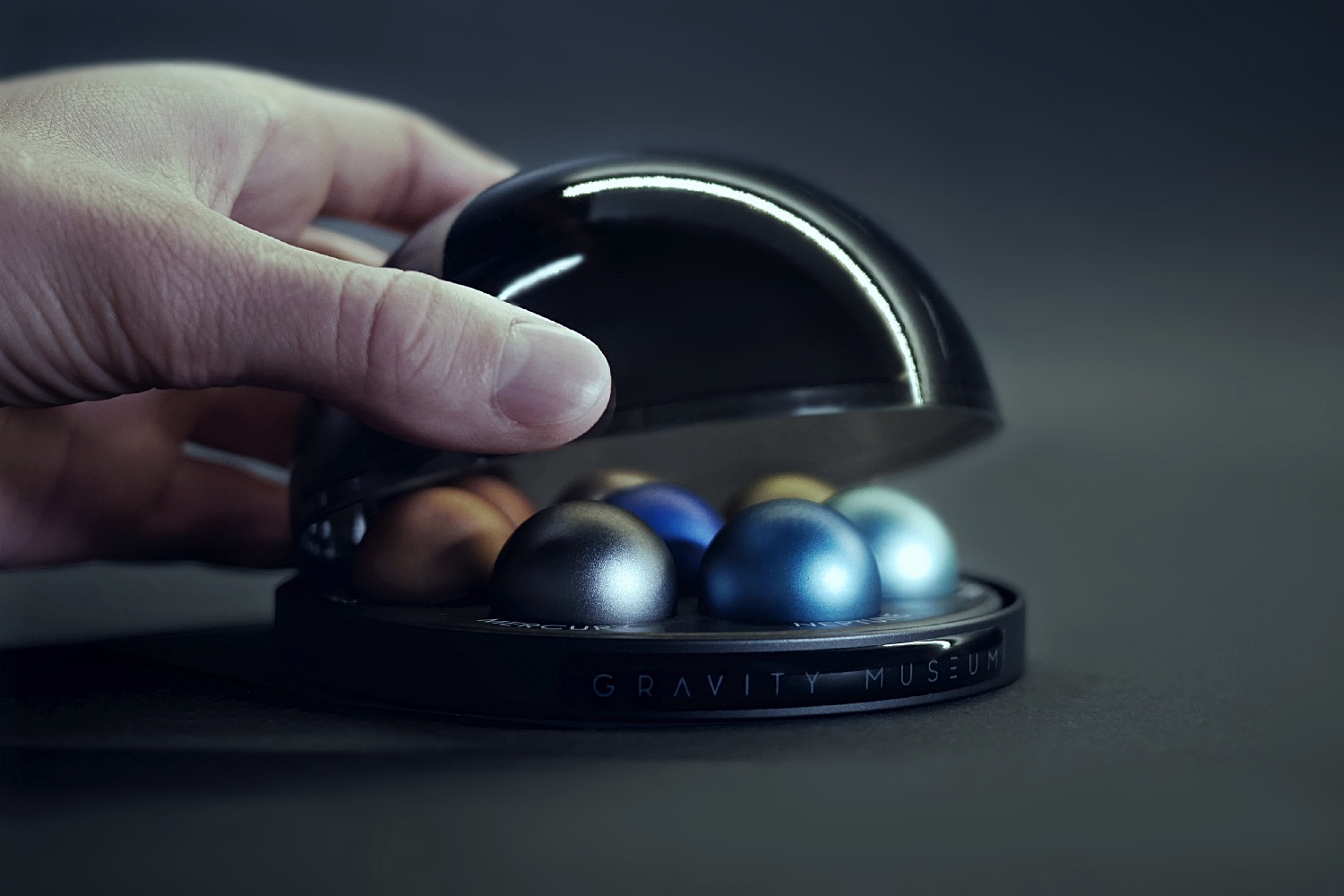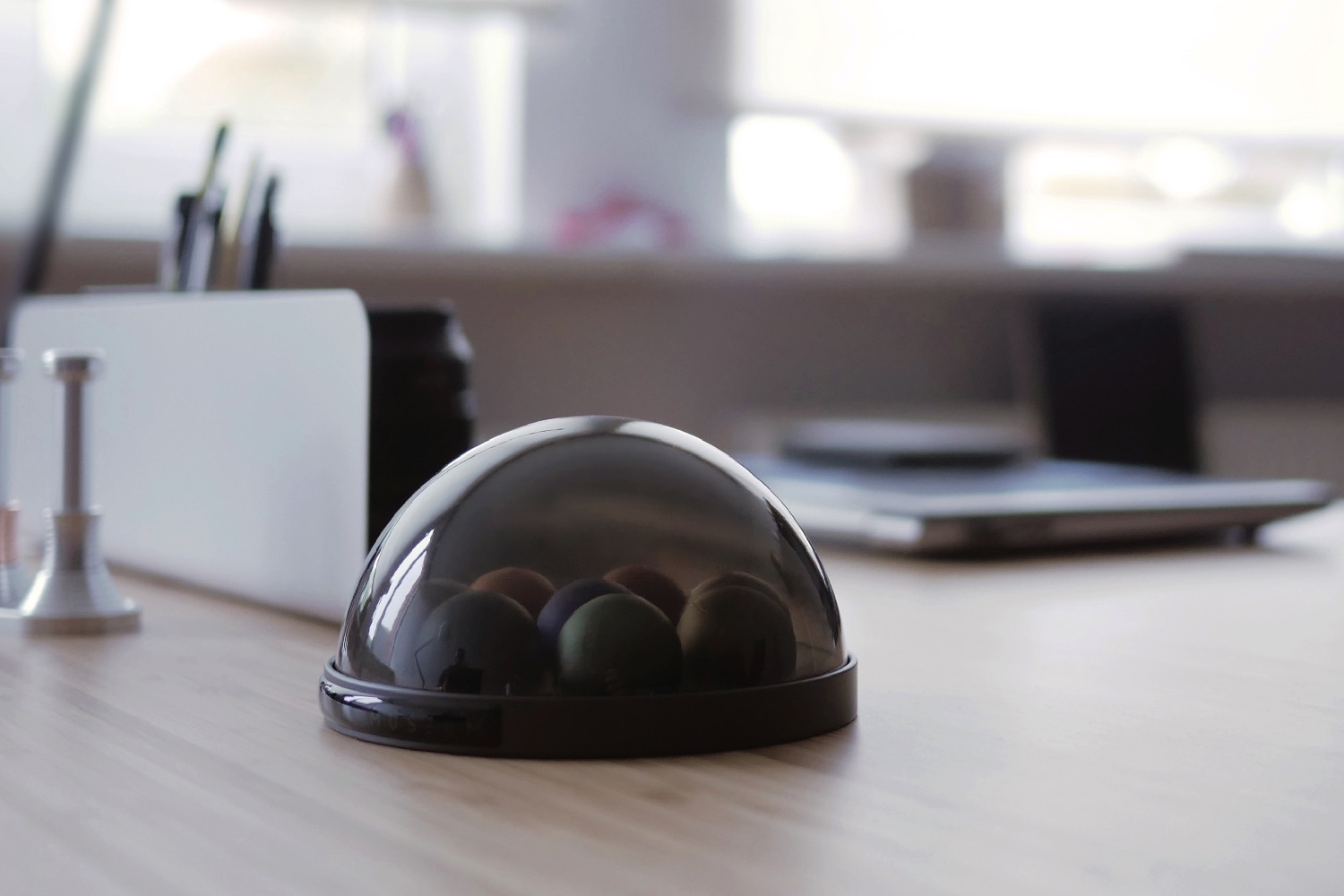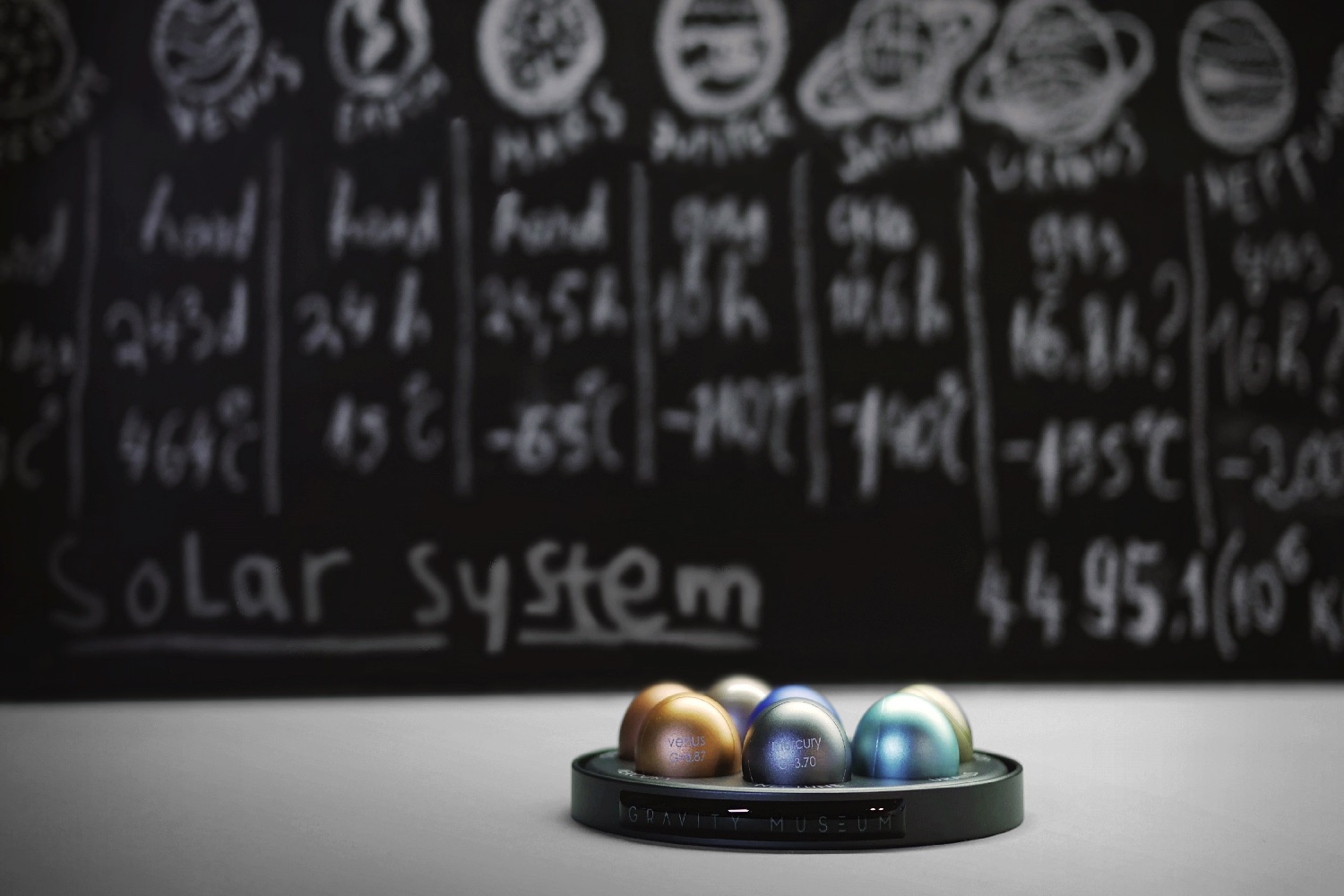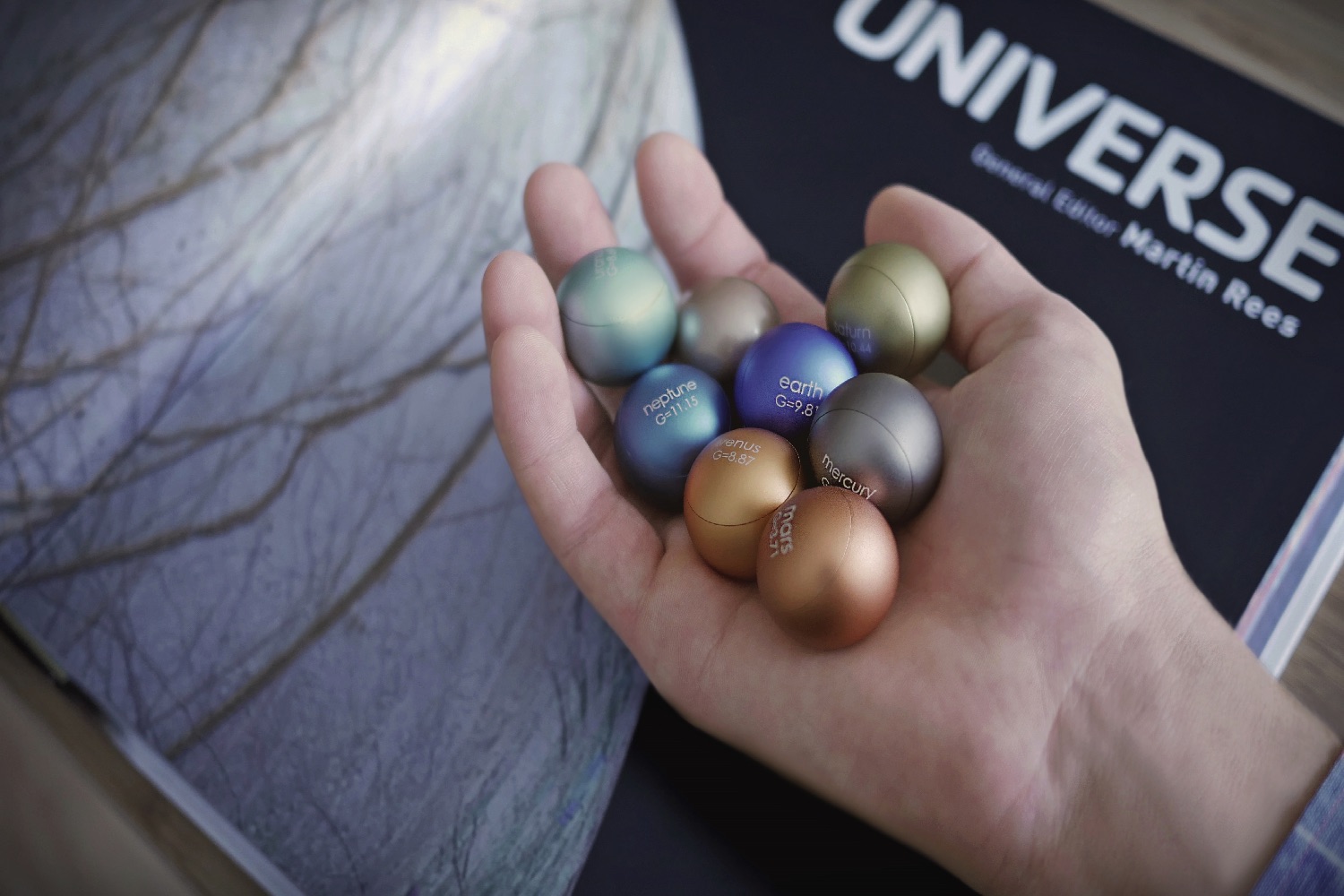To do this, the so-called “Space Museum” tabletop display is composed of eight different, precisely machined planetary spheres of equal size, but different weights, intended to represent each planet’s gravity. The Earth unit acts as a kind of control, against which you can compare every other sphere.
Each sphere is made of the same high-grade aluminum (with the exception of the super heavy Jupiter ball, which is stainless steel), but different ones have differently sized hollows in the center so that they weigh the correct relative amounts. It’s a fun demonstration of just how much gravity fluctuates between planets — brought to life in a way that no textbook can quite manage.
While we haven’t yet been able to lay our hands on a Space Museum kit, the high-quality finish looks equally well thought out — with each laser-engraved sphere anodized a different color, based on planet photos from NASA to achieve the correct color tones. The spheres also come in a collector’s case inspired by the toned-acrylic glass used in astronaut helmet visors.
“I believe that whether you are a passionate space enthusiast or just want to discover more about outer space, Gravity Museum would create an exciting way to explore the universe,” Krisjans told Digital Trends. “It would also be a great way to present the science and space exploration to the young generation. It is much easier to excite a person by showing them the physical process than by telling the theory behind it.”
If you want to get hold of a Space Museum of your own, you can currently pre-order one on Kickstarter, with prices starting at $92. Shipping is set to take place in March — if you can … weight that long.
